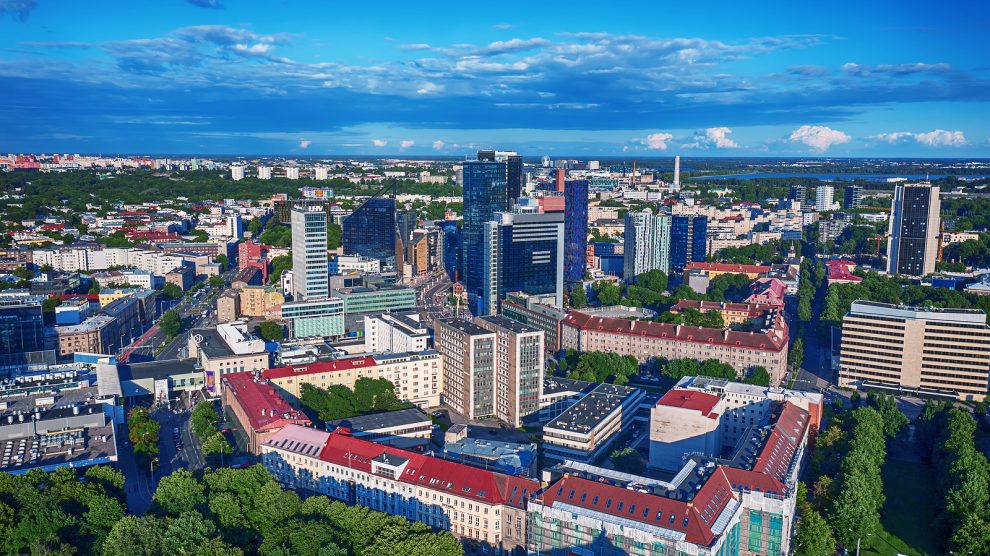The latest edition of a major Emerging Europe report reveals that Estonia continues to boast the most competitive IT sector in the region.
For the second year in succession Estonia tops Emerging Europe’s IT Competitiveness Index, part of an annual Future of IT report which looks at the technology sector in all 23 countries of the region using the same methodology to understand how each country contributes to the size of the regional market.
Lithuania takes second spot, leapfrogging Poland which falls to third.
Latvia is in fourth place – a notable improvement on last year, when it was eighth – while Hungary also climbs four places to take fifth. Heading in the wrong direction is Czechia, which fell from third last year to seventh.
At the bottom end of table, Bosnia and Herzegovina once again has the least competitive IT sector in the region, followed by Azerbaijan and Albania.
Ukrainian resilience
Ukraine’s IT sector, despite Russia’s war, has been resilient: it takes 12th place on the index, an improvement on last year’s 14th.
“The Ukrainian IT sector has been a symbol of Ukraine’s resilience, bringing in much-needed export revenue – around eight billion US dollars last year,” says Craig Turp, Emerging Europe’s editor and one of the main contributors to the report. “IT companies have continued to deliver high quality work, even during blackouts, and many have even managed to increase their presence on the global market and attract new customers.”
“Each day we are becoming more advanced in the use, and creation of, technology,” according to Mykhailo Fedorov, Ukraine’s Deputy Prime Minister and Minister for Digital Transformation, speaking at the Tech Emerging Europe Advocates meeting in Warsaw on March 31.
Fedorov offered a few hints at where the technology sector in the country would be headed next, pointing the to creation of a military technology cluster next month.
“It will be a unique ecosystem that will connect developers with clients,” he said.
Estonia’s strengths
While Estonia leads in just one of the index’s four main categories (Economic Impact; the others are Talent, IT Infrastructure, Business Environment) it scores well in all of them, and tops several key metrics, such as PISA performance, and the number of IT workers and developers per capita. The country can boast 10 unicorns, and has set a target of 25 by 2025.
The other categories are led by Poland (Talent), Romania (IT Infrastructure), Czechia (Business Environment).
“Built on foundations laid by Skype, Estonia’s IT scene thrives thanks to its collaborative ecosystem that brings together all stakeholders: government, founders, investors, and universities,” says Turp, who has been exploring Estonia’s IT scene on the ground for several years.
Ease of doing business – the country leads the world in digital government – is another key factor.
“Digitalisation has shaped our national identity,” says the country’s prime minister, Kaja Kallas, who spoke to Emerging Europe last autumn. “Setting up a company is simple, doing taxes is simple.”
Indeed, the country led the International Tax Competitiveness Index in 2021.
One area where Estonia performs poorly is the cost of broadband services: in the emerging Europe region only Slovenia has more expensive internet access.
The Lithuanian challenge
Lithuania’s continued march up the rankings means that Estonia will face a real challenge to hold on to the top spot. The start-up scene in Lithuania is equally as vibrant as Estonia, with its recent focus on fintech appearing to pay dividends.
According to Invest Lithuania, 263 fintech companies were domiciled in Lithuania in 2022, employing 7,000 people – a 19 per cent increase over 2021.
“While in 2022 global investment in fintech fell by almost a third, the Lithuanian fintech sector remained resilient. Put that together with an 80 per cent increase in aggregate banking revenues and you have a picture of robust health and solid fundamentals,” says Elijus Čivilis, general manager at Invest Lithuania.

IT: An increasingly crucial sector
Overall, the report demonstrates how important the IT sector now is to just about every country in the region. The emerging Europe region produced more than 100 billion euros worth of IT services in 2021, with more than 46.8 billion euros worth of IT services exported, making an important contribution to the region’s balance of payments.
Emerging Europe’s report also shows that in the 23 countries surveyed, 2.24 million people are employed in IT (nearly three per cent of the overall workforce), with Poland, Ukraine, Romania, Czechia, and Hungary accounting for more than 60 per cent of that figure.
While some countries are struggling to find enough skilled IT employees to meet market demand – and Estonia is one of them – the pipeline of talent looks promising: Emerging Europe’s data shows that more and more prospective students are choosing ICT as a future career path – the number of IT students in the region exceeded 435,000 in 2021. More than 82,000 IT students completed their studies in 2021.
IT salaries in the region are high, led by Lithuania (2,860 euros) and Estonia (2,804 euros).
While the lowest IT salaries in the region are in Georgia (533 euros), across the board IT workers are paid significantly more than the national average salary.
In exchange, IT workers create enormous value: an average of more than 80,000 euros per employee across the region, and as much as 132,000 euros in Estonia.
A free copy of Emerging Europe’s Future of IT 2023 report can be downloaded here.
Unlike many news and information platforms, Emerging Europe is free to read, and always will be. There is no paywall here. We are independent, not affiliated with nor representing any political party or business organisation. We want the very best for emerging Europe, nothing more, nothing less. Your support will help us continue to spread the word about this amazing region.
You can contribute here. Thank you.



Add Comment